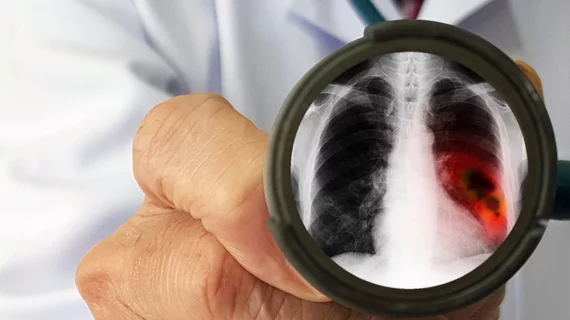‘Imperative’ that providers consider cancer survivors for low-dose CT screening, radiologists charge
It is “imperative” that providers consider cancer survivors for low-dose CT lung screening, radiologists charged in a new analysis published Tuesday in JACR.
The number of such survivors has swelled in recent years amid improvements in diagnosis and treatment, with their numbers expected to reach 21 million by 2029, some estimate. Surviving the Big C comes with a 14% higher risk of develop another malignancy, and lung cancer is the most common culprit. Screening with low-dose CT imaging could help catch this concern, but previous scientific studies have excluded patients with histories of malignancy, Harvard medicine researchers noted.
Wanting to close this knowledge gap, scientists retrospectively analyzed lung cancer screening data from a four-year period at Brigham and Women’s Hospital. They found similar rates of diagnosis among survivors and those without a previous cancer case, underlining the importance of remaining vigilant after individuals defeat the disease.
“Given increasing cancer survivorship, it is imperative that patients with histories of malignancy be considered for [lung cancer screening],” Suzanne Byrne, MD, and Mark Hammer, MD, with the Harvard-affiliated health system’s department of radiology, wrote April 20. “Future studies should be conducted on this patient population to more clearly define the role of LCS for cancer survivors,” they added.
For the investigation, the two radiologists tapped Brigham’s electronic health record looking for all patients who underwent low-dose CT between 2014-2018. Altogether, more than 5,800 CT exams met the study criteria, with about 1,200 performed on cancer survivors (21%). For imaging of patients without any history of malignancy, 1.9% (or 87 patients) were diagnosed with lung cancer while 1.5% (68 patients) were diagnosed with non-lung malignancies. That compared to 1.4% (17 patients) and 2% (25 patients), respectively, in the cancer survivor group.
Crunching the numbers further, the authors found that a history of malignancy did not spell a greater risk of either developing lung cancer or a recurrence of the same form of the disease. However, history of prior malignancy was, in fact, predictive of non-lung cancer in their per-patient analysis.
The study has limitations, including its retrospective design, but the authors believe it offers key clues for providers treating cancer survivors.
“Certainly, appropriate referral of patients with prior malignancies for LCS is critically important,” Byrne and Hammer advised. “Although primary care will always be the most significant referral source for LCS CT, oncologists have a unique opportunity to ensure that comprehensive screening for malignancy occurs, where appropriate, in their patient population,” they added later.

